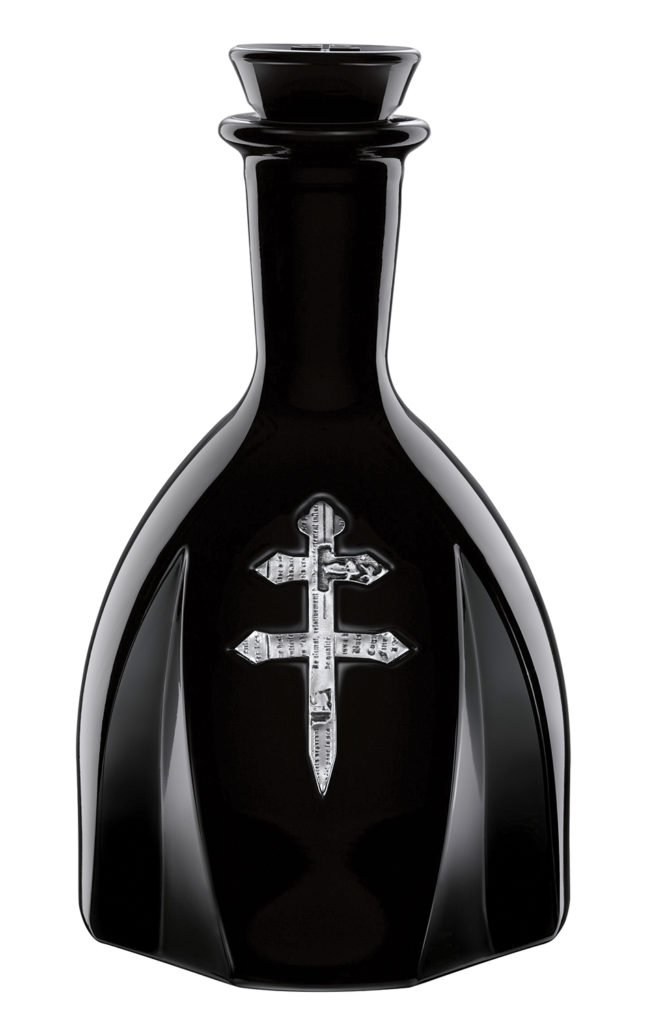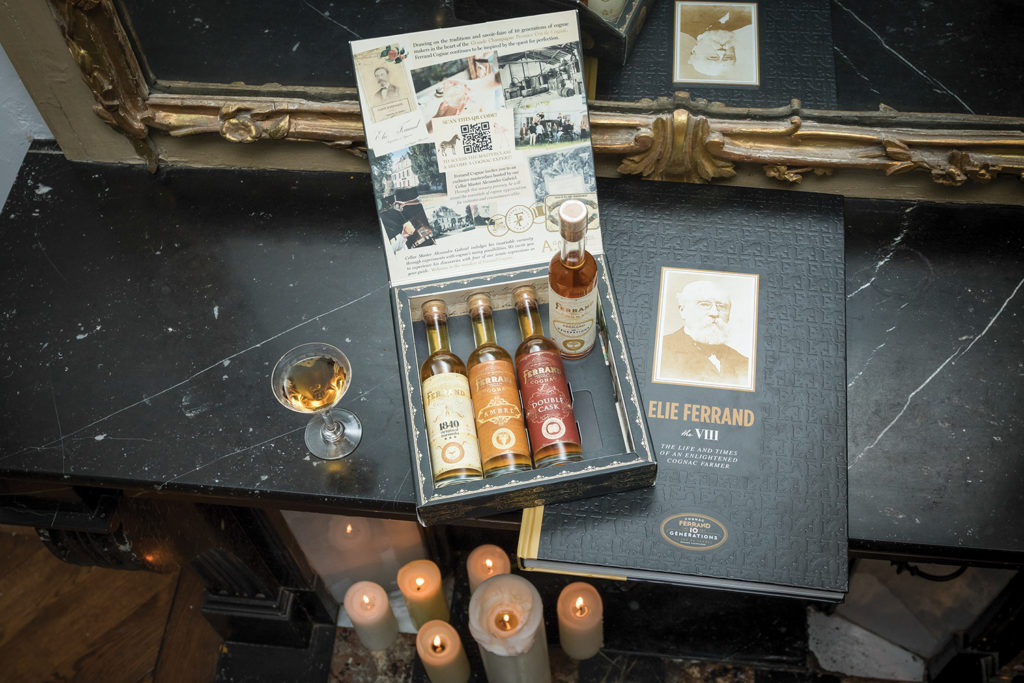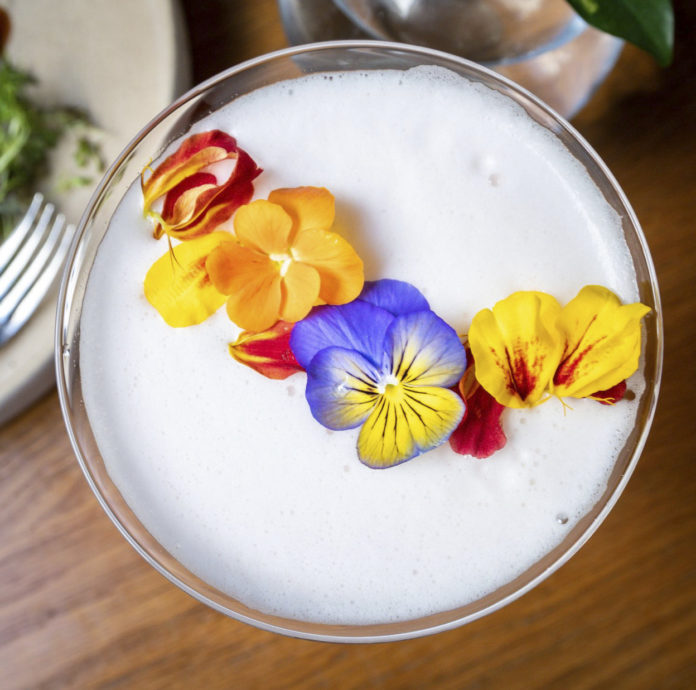Say what you will about brandy: no other spirits category spans a wider range of styles. From vegetal unaged pisco, to crisp Calvados, to rich, luscious, baking spice-tinged XO Cognac, brandy is brimming with a dizzying array of hues, aromas and flavors, making it particularly exciting poured into the snifter or shaker.
Somehow, though, brandy is frequently pigeonholed as solely an after-dinner, fireside quaffer. It can be that, and enjoyably so. But it can also be so much more.
Cognac Widens Its Appeal
“Brandy is the category that gets the least amount of attention, but that is changing,” says Adam Robinson, owner and bartender of Deadshot, a 52-seat modern cocktail bar in Portland, OR. “But given its wide reach, there is tons of room for growth, and I would expect to see more of these products on cocktail menus and store shelves.”
He’s a big fan of Cognac that sees some time in wine barrels before being bottled, like 10 Generations from Pierre Ferrand, finished in Sauternes casks. Maison Ferrand recently introduced Ferrand Cognac The Collection, a boxed set containing four 100-ml. bottles: 1840 Original Formula, Ambré, 10 Générations and Double Cask Réserve. The set was inspired by private showings for customers held by owner and master blender Alexandre Gabriel at the company’s distilleries and cellars.
“Cognac houses are playing with wood influence in new ways that allow for some creative expressions,” says H. Joseph Ehrmann, proprietor of Elixir, a 93-seat pioneering cocktail bar in San Francisco that’s also the city’s second-oldest continually operating saloon. “They are producing interesting and compelling flavor profiles, especially some spice and darker notes that work well in cooler weather.”
Ehrmann cites the microbarique approach in Bourgoin Cognac’s 1998 bottling and doubling the less in the Double-lie M2010 as “innovative approaches that breathe fresh air into such an old, established category.” Brandy that’s finished in port or sherry casks show fruity and nutty notes that work well in fall and winter. For instance, the Camus Cognac Port Cask Finish spends time in tawny port casks, and Courvoisier Cognac Sherry Cask Finish has unctuous honey and dried fruit on the palate.
Indeed, interesting wood aging regimens for brandy have the potential to woo an entirely different camp of brown spirits fans. “There are many whiskey fans turning their attention, palates and budgets to Cognac and Armagnac,” says Ms. Franky Marshall, a New York-based modern bartender, educator and consultant. “These ‘malternatives’ appeal to everyone from bottle hunters who appreciate the gentler prices, to bartenders looking to offer their guests more options.”
American oak finishes for brandy and Cognac show off the caramel and vanilla characteristics that whiskey drinkers crave, agrees Ehrmann, leading them to become more curious about switching from grain to grape. Expressions such as Bache Gabrielsen American Oak Aged Cognac, matured in new Tennessee oak barrels for a minimum of six months, and Martell Blue Swift, finished in Kentucky bourbon barrels, are a seamless segue into the category
“Armagnac is big recently among those who drink bourbon as an affordable alternative for vintages and big bold flavors,” says Steven Hirschauer, bartender, consultant and educator of The Responsible Glutton in San Diego, who has several spirit certifications including Cognac BNIC and Armagnac BNIA.

He points to high-quality offerings worth seeking out like PM Spirits L’Encantada and portfolios from importers Charles Neal and Heavenly Spirits, including Armagnac DeLord, Château de Hontambere, Château de Pellehaut and Domaine Boingnères.
Cognac producers have been getting creative in promoting their brands and reaching new audiences with cocktails. For instance, Bacardi Cognac brand D’Ussé, recently partnered with mixologist Christine Kim on an immersive cocktail experience at the Taste of Asia fundraiser in New York, included premium tea-infused Cognac cocktails.
D’Ussé, founded by Shawn “Jay-Z” Carter, is the fastest grower among the brandy and Cognac brands, according to the 2022 Liquor Handbook, increasing 59% from 2020 to 2021. Hennessy is the top Cognac brand while E&J is the leading domestic brandy brand and Presidente is the top imported brandy.
American Craft Brandy Excites
“We are seeing younger brands take an interest in brandy, and I hope that translates to people opening their eyes to what brandy can be,” says Riki Noar, wine and spirits specialist at the Fine Wine and Good Spirits store in Girard, PA. She’s been noticing more brandies from smaller American distilleries, like the locally produced Eight Oaks Barrel Aged Applejack.
More readily available are expressions from larger U.S. distilleries like Clear Creek in Oregon, founded in 1985. Their flagship product, an unaged pear brandy, is joined by others like Old Delicious Double Bourbon Barreled Apple Brandy. Robinson cites the region’s overabundance of fruit production that makes for great brandy — and admits that his customers may be more knowledgeable about them since they are located in their backyard.
Copper & Kings, operating in the heart of bourbon country in Louisville, KY, produces award-winning American Craft Brandy, Butchertown Brandy and American Apple Brandy, all aged mainly in bourbon barrels. But they are always pushing the envelope with experimental techniques and maturation methods for their brandies — including sonic aging.
“Brandy is a spirit genre that is overlooked, but a brandy drinker is adventurous and loves to try other spirits,” according to Judy Elahi, corporate bar director for 101 Hospitality in Washington, D.C. “I recommend trying a brandy that you wouldn’t typically order.”
Squarely in this camp is Fumus Pumila from Baltimore Spirits Co., a smoked apple brandy that’s infused with Appalachian spices and herbs. “I used to work at a bar that served only domestic spirits, and this was our ‘mezcal’ sub,” Elahi recalls. “It has a clean apple-forward palate with smoke and herbs on the finish.”
How About Them Apples? And Grapes?
Close in pedigree to American apple brandy is an elegant French expression that is a favorite of Corinne Bresse, director of operations for the 283-seat contemporary European bistro The Henri in Washington, D.C. “The most exciting [style] for me is Calvados, which has small producers and excellent quality.”
Hailing from the Normandy region, this spirit can be produced by distilling cider made from apples or pears; top producers include Avallen, Boulard and Christian Drouhin.
Pisco, a favorite in South America and beyond, recently received two new expressions to the category. Chilean winery Lapostolle’s new offerings honor the legacy of the seventh-generation producers. Lapostolle Pisco Blanco and Pisco XO are made with pink muscat and Muscat of Alexandria sourced from Chile’s Elqui and Limari Valleys, and produced in a process similar to that used for Cognac, including a copper alembic still.
Pisco Bianco is clear with notes of lemongrass, white fruit, herbs and tangerine; Pisco XO, aged for six years in French oak, is amber in the glass, with fruity and floral aromas, a full-bodied yet silky mouthfeel and notes of gingerbread.
A Brandy for Every Cocktail
Pisco Punch and Pisco Sours are inextricably linked with pisco, just as a stylish Sidecar or a French 75 are associated with Cognac. The classic Vieux Carré, a stirred libation with rye, Cognac, sweet vermouth, Benedictine and aromatic bitters, is a great example of how brandy is used as an enhancement in split base cocktails or as a modifier.
“Sometimes these spirits can be a bit cost prohibitive, but many are also very flavorful so just a little bit goes a long way,” Robinson says. “Half an ounce of a nice Calvados can add an elegant layer of flavor to say, a stirred whiskey cocktail.”
His Violet Hour is a split base drink that starts with blueberry-infused Old Forester 100 Bourbon and De Luze VS Cognac, stirred with Dolin Genepy, rosemary maple syrup and Fee Brothers Whiskey Barrel Bitters, served over a large cube and garnished with a lemon wheel. Deadshot also puts several warm tipples on the menu when the weather cools down, for which aged brandies and Cognacs are a perfect base. “Their flavor profile pairs especially well with basking spices, apples, teas and similar ingredients commonly used in hot drinks,” Robinson continues.
Staffers always offer one that works with a variety of aged spirits, letting the customer choose. More often than not, brandy or Cognac is their first pick, with American whiskey a close second.
Noar also turns to traditional brandy cocktails–especially during the holiday season and winter, like eggnog with the vanilla-forward E&J XO Cognac or a Tom & Jerry made with Pierre Ferrand Cognac 1840. The latter bottle is her go-to. “It’s easy to find and is at a good price point for the quality,” she says. “It has caramel and floral notes on the nose, and a full body with vanilla, baking spices and dried fruit on the finish.”
Hirschauer mixes up an alternative to the ubiquitous Espresso Martini made with Cognac and coffee, and also likes serving Cafe Calva with cold brew and Calvados. He also replaces clear spirits like vodka in some drinks with pisco or Blanche Armagnac, which pack more flavor.
“Even though there is a Cognac for every season, I do expect to see more Cognac and Cognac cocktails being highlighted as the weather gets cooler,” Marshall predicts, including Highballs made with tonic or ginger ale. She recently developed a libation called Jus du Matin, with VSOC Cognac, smoked salt saline, carrot juice, freshly squeezed orange juice and corn liqueur, shaken, finely strained over one large cube and garnished with a whole parsley leaf.
At Elixir, “Crustas and Sidebars are still popular orders, but guests are always thrilled to try a new, original Cognac cocktail recipe when we have it,” Ehrmann says. Two of their most popular are the Japanese Black, with black-tea infused Pierre Ferrand Double Cask Cognac, Angostura bitters and orgeat, served up with a twist of lemon peel and a glass of ice water on the side; and the Nutty Professor, which shakes VSOP Cognac with Nardini Mandorla (a grappa infused with almond oil and cherry distillate), Novo Fogo Cachaça, lemon juice and simple syrup, served over crushed ice.
New to the menu this season is Figtorious Celebrations, with H by Hine VSOP Cognac, Fresh Victor Grapefruit & Sea Salt Mixer and fig syrup, shaken, strain and served up, garnished with a half of a black mission fig and an optional spritz of Alice & the Magician Spicy Ginger Mist.
For brandy cocktails, Elahi recommends Rujero Singani or Martell VS Cognac, both of which are versatile for a wide range of drinks. At Gravitas, 101 Hospitality’s modern American restaurant in Washington, D.C., she concocted a take on the Club cocktail dubbed the Player’s Club. “To add some more flair, balance and spice, I modified the classic recipe and added pizzazz.”
She shakes Martell VS Cognac and Piras 51 Cachaca with spiced pineapple, aquafaba, Scrappy’s Firewater bitters and lime juice, with bitters sprayed on top of the foam using a stencil. “It’s light, crisp, refreshing and spicy.”

Sweet, Savory or Salty — Brandy Holds Court at the Table
For many people, a crackling fireplace, overstuffed sofa and good conversation are the only pairings that brandy needs; but it is a surprisingly versatile spirit with the savory and the sweet. After all, it is made with grapes, which may account for its affinity with cheese.
According to Robinson, rich and creamy cheeses and young mild cheddars work well with younger VS style bottles, while longer-aged gouda and cheddar, as well as nutty and washed rind cheeses, pair with older Cognac expressions. According to Elahi, Cognac’s robust palate is a great match with parmesan, Irish cheddar, chocolate and figs, while Armagnac’s smooth mouthfeel needs intense flavors like foie gras, citrus tarts or smoked salmon.
Marshall susses it out using a different method: VS with oysters and raw fish, VSOP with grilled duck breast, and XO with bleu cheese and tarte tatin.
And while Ehrmann also suggests cheeses like Saint Nuage spread on an oat cracker with cherry compote and melted Camembert topped with fig jam, one sweeter option reigns supreme. “Definitely dark chocolate; I like around 70% cacao, and anything chocolate like chocolate cake, chocolate chip cookies — even poured into hot chocolate.”
As far as what’s next for the category, Marshall hopes to see the availability of more single variety Cognacs, since most on the market are made from blends. She’d also like to taste expressions from the lesser-known Dordogne region, which is still part of the AOC.
For Cognac and brandy newbies and enthusiasts alike, Marshall has one piece of advice. “Don’t limit yourself. Taste, experiment, and enjoy it year round, not just during the fall and winter.”
Kelly Magyarics, DWS, is a wine, spirits and lifestyle writer and wine educator based in the Washington, D.C. area. Read her recent piece, The Latest Trends in Sparkling Wine.










